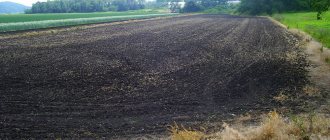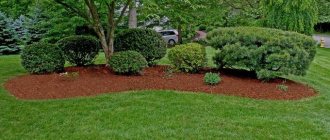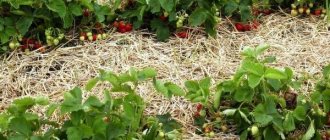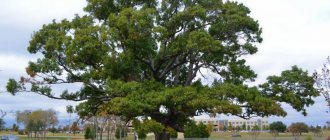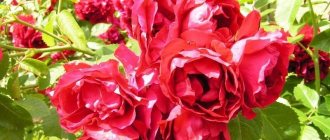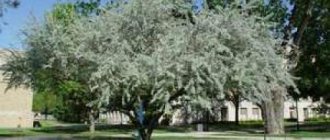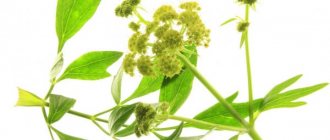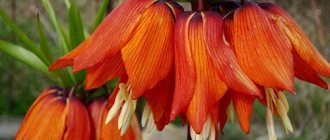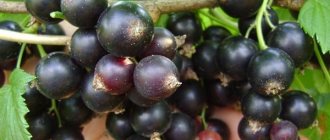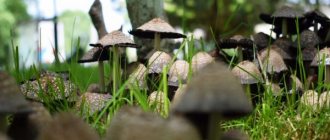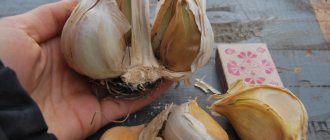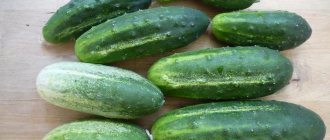Humus and black soil - what's the difference?
Chernozem is one of the types of soil, rightfully considered the most fertile and versatile. In Russia, the Black Earth Zone occupies a huge area. This is natural wealth, which cannot be created artificially. Chernozem is not a fertilizer, but contains all the necessary substances that allow you to grow plants without adding fertilizers.
Humus is an organic fertilizer, it is prepared from animal waste products (manure), or from green manure plants by collecting them and laying them down to rot. This is the difference between the concepts under consideration: humus is a fertilizer, and chernozem is a type of soil.
Another popular type of organic fertilizer is peat, a substance of natural origin. It is obtained from plant residues that have rotted in swamps and along river banks. The addition of rock improves the structure of the soil and saturates it with nutrients.
Features of humus as a fertilizer
Humus is animal waste that has decomposed over a long period of time to the state of black earth, mixed with bedding, residues of feed, hay, and other biological substances.
Analyzing what to use: humus or manure as a fertilizer, we can come to the conclusion that it has no disadvantages, it is considered homogeneous in composition, does not have the characteristic smell of manure, but smells like earth, and is an ideal fertilizer for all crops.
Types of humus in demand in agriculture:
There are other, less frequently used types of organic fertilizers: rotted sawdust from deciduous trees, seed or rice husks, and recently there has been interest in using manure as an alternative. As an option, it is also possible to use .
Pros and cons of humus
The key to obtaining a harvest is fertile soil, but often places with poor soil composition are allocated for dacha plots. Even rich lands become depleted over time and require fertilization. The most common and beneficial organic substance is humus. Main advantages of the product:
- accessibility - it can be purchased at a fairly low price, and in rural areas it is easy to make it yourself;
- high concentration of nutrients;
- versatility (suitable for application to any type of soil);
- ease of use.
The following circumstances can be considered disadvantages:
- Obtaining humus requires a lot of time.
- Weed seeds and pest larvae are introduced with manure.
- There is a danger of overdose.
Humus soil is not; it must be mixed with soil, observing the required proportions.
Features of manure as fertilizer
Biological mass effective for increasing fertility varies in quality, depending on what animals it is provided by:
- the best humus -;
- the second in importance and the first in frequency of use is cow;
- the worst is pork.
The quality is affected by the litter used: manure on peat litter and sawdust is more suitable and convenient for embedding in the ground than on straw.
The degree of decomposition plays an important role:
- the most useful is manure that has rotted to the level of a loose red mass;
- the second most valuable is considered semi-rotted, with a large amount of nutrients;
- the least beneficial for plants and the most concentrated is fresh manure.
The disadvantage of the product is the large amount of unrotted weed seeds in its composition. Once in the ground, they quickly germinate and cause the gardener a lot of additional trouble. Although they are also present in humus, the cleanest in this regard is horse manure; it is not a breeding ground for weeds.
Chernozem: features and advantages
The formation of soil occurs continuously over centuries, and the darker it is, the higher the humus content in it.
Signs of black soil:
- black color;
- lumpy structure;
- high concentration of nutrients;
- resistance to washing and weathering.
Chernozem contains chemical elements necessary for normal plant growth:
- calcium – 70%;
- magnesium – up to 20%;
- nitrogen, iron, phosphorus and others.
Real black soil has no disadvantages, but acquiring it is not an easy task due to:
- the fact that it is easy to run into a counterfeit;
- high price.
Often, instead of high-quality soil, they sell soil from greenhouses, which has already given up all its nutrients and may be infected with fungi. Sometimes, under the guise of black soil, they offer the top layer from construction sites, which contains garbage and harmful impurities. Some suppliers themselves produce a soil mixture of unclear composition, which can be contaminated with pest larvae, dangerous viruses and fungi. It is impossible to determine this visually; only laboratory analysis can distinguish a counterfeit from a counterfeit.
Which is more economical?
Comparing manure and humus, we can say with confidence that the first fertilizer is more economical. Manure feeding is not used in concentrated form. It is mixed with soil or a small part of the raw material is used to prepare aqueous infusions.
Chernozem, like humus fertilizer, is introduced undiluted. Therefore, the consumption of raw materials will be significantly greater.
You will need:
Awakening the currant bush: first feeding Currant is an undemanding shrub that produces healthy fruits even with minimal care. Like any...
Another point is the number of feeding introductions. Manure is applied in the fall when digging beds or used to mulch the soil under fruit trees. Chernozem is used much more often. As a rule, it is applied not only at planting, but throughout the entire growing season of plants.
It is very difficult to compare chernozem with manure, since these concepts are not identified - one is a type of soil, and the other is an organic fertilizer for the soil, but both of these components are extremely useful for garden and garden plants. Their regular and correct use will help to significantly enrich the soil and get an excellent harvest.
Advantages and disadvantages of peat
This unique natural substance contains all the basic nutrients: nitrogen, phosphorus, potassium. The addition of peat will make sandy and sandy loam soil in the garden plot fertile; adding it to loam will improve the structure, make the soil breathable and light.
When wondering what is better - peat or humus, you should take into account the type of soil and the possibility of purchasing one or another fertilizer. Humus is richer in composition than peat, but the latter can be used in almost unlimited quantities without fear of harming the plants. These materials differ in that the manure product is usually recommended to be applied in the fall for digging, and the use of peat for the garden is done without prior preparation.
The disadvantages of the marsh substrate include its ability to increase the acidity of the soil, so it is recommended to add chalk or dolomite flour along with it.
Scope of application of organic fertilizers in vegetable gardens
A farmer, when choosing raw materials for a personal plot and deciding which is better: humus or manure as a fertilizer, must know where this or that type of organic matter will bring the greatest benefit.
Fresh manure (especially horse manure) has high heat transfer; it is used for natural heating of beds in greenhouses or is used in depleted areas before winter. Tucked into the ground, under a layer of snow, it rots, fertilizing and structuring the soil; by spring, a valuable layer of aerated, nutritious humus matures, in which many insects and arthropods settle, further improving the composition and porosity of the soil.
Fresh manure is used to prepare a concentrated liquid infusion, then the seedlings are watered in a diluted form.
Humus has wider uses:
In order for manure to turn into a universal nutrient mixture, it needs to be heated for at least two years; it is quite possible to prepare valuable organic fertilizer yourself by placing the organic product in piles and sprinkling it with layers of soil. A layer of soil is also needed on top to prevent nitrogen from evaporating. Periodically, several times a season, the pile is mixed, allowing the substrate to fill with air.
Knowing the purpose of two types of organic matter, the gardener chooses which fertilizer is better: manure or humus, guided by the needs of his personal plot. The applied fertilizer is enough for 3-4 years, after which the soil will need to be replenished with nutrients again.
Comparative analysis of chernozem, peat and humus on composition, properties and cost
| Substance | Compound | Basic qualities | price, rub. / 1 m3 (in Moscow) |
| Chernozem | Humus – up to 9%, potassium, magnesium, nitrogen, iron, phosphorus | Excellent soil structure. Neutral acidity. Beneficial microorganisms | 950 |
| Humus | Nitrogen and potassium - 0.8% each, phosphorus - up to 0.7%. Organic matter 20-28% | Retains moisture, structures the soil, releases carbon dioxide, attracts beneficial worms | 1300 |
| Peat | Nitrogen – up to 2.5%, humic acids 15-50%, carbon 50-60% | Improved soil structure, reduced nitrate levels, improved root development | 800 |
The table shows that 1 m3 of humus is more expensive than the same amount of chernozem, but based on the fact that the first substance is fertilizer, it is required significantly less than chernozem.
Vermicompost
Vermicompost is compost, manure or humus that has been “treated” with earthworms, ordinary earthworms or specially grown red Californian ones.
Vermicompost can rightfully be considered the most valuable organic fertilizer. In addition to micro- and macroelements, it is rich in humic acids, thanks to which soil fertility quickly and significantly increases. Vermicompost is sold both in dry form and in the form of a liquid concentrate. It can be used everywhere and in any quantity.
Conclusions: in what cases is it more profitable to use chernozem, peat, humus?
If you need to fill new areas with infertile soil with soil, raise the surface level in lowlands where rainwater stagnates, build a high flower bed, or replace the soil in a greenhouse, then it would be right to bring in black soil. This will make it possible to grow plants for several years without worrying about fertilizing.
If you need to increase soil fertility in developed garden plots, it is more advisable to choose humus or peat. The use of these substrates is more profitable because a lot of black soil is required, and humus and peat are fertilizers that are mixed with the soil available in the beds, i.e. Their difference from chernozem is the volume of application.
What is preferable for the garden, humus or black soil? It all depends on what task the materials will perform.
Each bed has its own fertilizer
The concepts of humus and manure are often confused. Compost and humus also add to the confusion. In fact, these are all different things that have one thing in common - the underlying organic matter. So, compost is the result of rotting plant residues - the compost component includes weeds, old tops, and table scraps, which are also suitable as fertilizer.
Excellent cucumbers are obtained with the correct use of organic fertilizer in the form of manure.
Humus is an organic substrate (plant and animal origin), which is processed by earthworm enzymes and constitutes the most useful part of the soil. Manure is the remains of animal activity, combined with elements of feed litter.
Important!
Humus, as the name implies, is rotted manure. To become humus, manure must rot for at least a year, combining with the earth.
Ash
Ash is an indispensable potassium fertilizer in organic farming.
It reduces the acidity of the soil and enriches it with valuable microelements: potassium, phosphorus, manganese, boron. The ash from burning straw is considered the most valuable, but most often gardeners use wood ash, which is more accessible to everyone. It is worth remembering that the ash of deciduous trees contains more useful substances than the ash of coniferous trees. The ash from burning young small branches is richer in nutritional elements than the ash from old rotten trunks.
Ash is very often used in mixed fertilizers with manure or droppings, it is added to herbal infusion, and layers of plant residues are poured over it in compost heaps. The only vegetable that doesn't really like ash is carrots. But nightshades (potatoes, tomatoes, peppers) love it!
